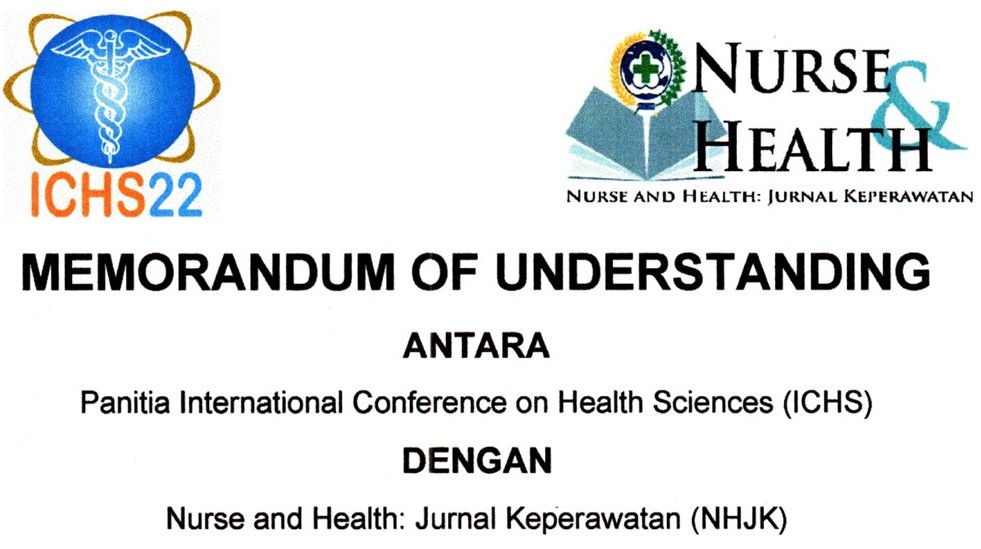THE EFFECT OF EARLY BREASTFEEDING INITIATION (IMD) ON NEW BORN BABY TEMPERATURE IN BPS HEPPY RINA, S.ST, SEDURI VILLAGE-MOJOSARI AND BPS FIFIT, S.ST, PANJER VILLAGE-MOJOSARI
Abstract
Background: Newborns often experience a decrease in body temperature. This is due to the inability of newborns to maintain body temperature, subcutaneous fat that has not been perfect, the body surface is broad compared to body mass, and the temperature of the cold environment. To maintain the baby's body temperature to remain normal, an effort must be made. Hypothermia baby handling in BPS is to provide a warm light to increase the baby's body temperature by giving 100 watts of light.Objectives: This study aimed to determine the effect of Early Breastfeeding Initiation (IMD) on the body temperature of newborns.Methods: The research design used was experimental research with the design of the quassy experiment. The independent variable is the body temperature of newborns without Early Breastfeeding Initiation (IMD). The dependent variable is the body temperature of a newborn with Early Breastfeeding Initiation (IMD). The population of all maternity women is 20 people. The sample from this study were 16 maternity respondents. Sampling using accidental sampling method. The research was conducted at BPS Heppy Rina, S.ST, Seduri Village - Mojosari and BPS Fifit, S.ST, Panjer Village - Mojosari. Data collection uses primary data. The instrument used is a thermometer and checklist. Data is presented in the frequency distribution table and analyzed using the Willcoxon test.Results: The results showed that almost all newborns without IMD had hypothermia (43.74%), most newborns with IMD had normal body temperature (37.5%), Willcoxon test results ρ 0.025 <0.05, then H1 was accepted which meant there was an influence of initiation Early Breastfeeding (IMD) on the body temperature of newborns at BPS Heppy Rina, S.ST Seduri Village - Mojosari and BPS Fifit, S.ST Panjer Village - Mojosari.Conclusion: Based on the results of the study obtained early breastfeeding initiation (IMD) affects the body temperature of newborns. Based on the results of these studies, then the handling of newborns who experience hypothermic body temperature is more effective to do Early Breastfeeding Initiation (IMD). Keywords: Early breastfeeding initiation, newborn body temperature, hypothermic.Downloads
References
Hidayat Azis, A. (2010). Metode Penelitian Kebidanan Teknik Analisa Data. Jakarta: Salemba Medika.
Indonesian Ministry of Health. (2010). Buku Panduan Tatalaksana Bayi Baru Lahir Di Rumah Sakit. Jakarta: Indonesian Ministry of Health.
Kritayanasari. (2010). Asuhan Neonatal pada bayi baru lahir. Jakarta: Graha Ilmu.
Moh, N. (2009). Metode Penelitian. Jakarta: Ghalia Indonesia.
Notoatmodjo, S. (2005). Metodologi Penelitian Kesehatan. Cetakan ketiga. Jakarta: PT. Rineka Cipta.
Notoatmodjo, S. (2010). Metodologi Penelitian Kesehatan. Jakarta: Rineka Cipta.
Nursalam. (2008). Konsep dan Penerapan Metodologi Penelitian Ilmu Keperawatan. Surabaya: Salemba Medika.
Priyambodo. (2008). Fisika Dasar untuk Mahasiswa Ilmu-Ilmu Eksakta dan Teknik. Jogjakarta: Penerbit Andi.
Proverawati, A., Islaely, A. D., & Aspuah, S. (2010). Panduan memilih kontrasepsi. Yogyakarta: Nuha Medika.
Riwidikdo, H. (2009). Statistik Kesehatan. Yogyakarta: Mitra Cendikia Press.
Rosita, S. (2008). ASI untuk Kecerdasan Bayi. Yogyakarta: Ayyana.
Rusli, H. U. (2008). Inisiasi menyusui dini plus ASI eksklusif. Jakarta: Puspa Swara.
Saifudin. (2007). Buku Acuan Pelayanan Kesehatan dan Neonatal. Jakarta: YBPP.
Sarwono, S. 2007. Sosiologi Kesehatan. Yogyakarta: Gadjah Mada University Press.
Sumarsono, J. (2009). Fisika: Untuk SMA. MA Kelas X. Jakarta: Pusat Perbukuan, Departemen Pendidikan Nasional.
Suhermi. (2009). Persalinan dan bayi baru lahir. Jakarta: EGC.
Sujiyatini. (2010). Asuhan Ibu Nifas. Yogyakarta: Pustaka Pelajar.
Taylor, J. (2005). Buku Ajar Praktik Kebidanan. Jakarta: EGC.
Waylor. (2008). Dasar-Dasar Keperawatan Maternitas. Jakarta: EGC.
Authors who publish with Nurse and Health: Jurnal Keperawatan agree to the following terms:
- Authors retain copyright licensed under a Creative Commons Attribution-NonCommercial 4.0 (CC BY-NC 4.0), which allows others to remix, tweak, and build upon the authors' work non-commercially, and although the others' new works must also acknowledge the authors and be non-commercial, they don't have to license their derivative works on the same terms.
- Authors are permitted and encouraged to post their work online (e.g., in institutional repositories or on their website) prior to and during the submission process, as it can lead to productive exchanges, as well as earlier and greater citation of published work (See The Effect of Open Access). Authors can archive pre-print and post-print or publisher's version/PDF.























